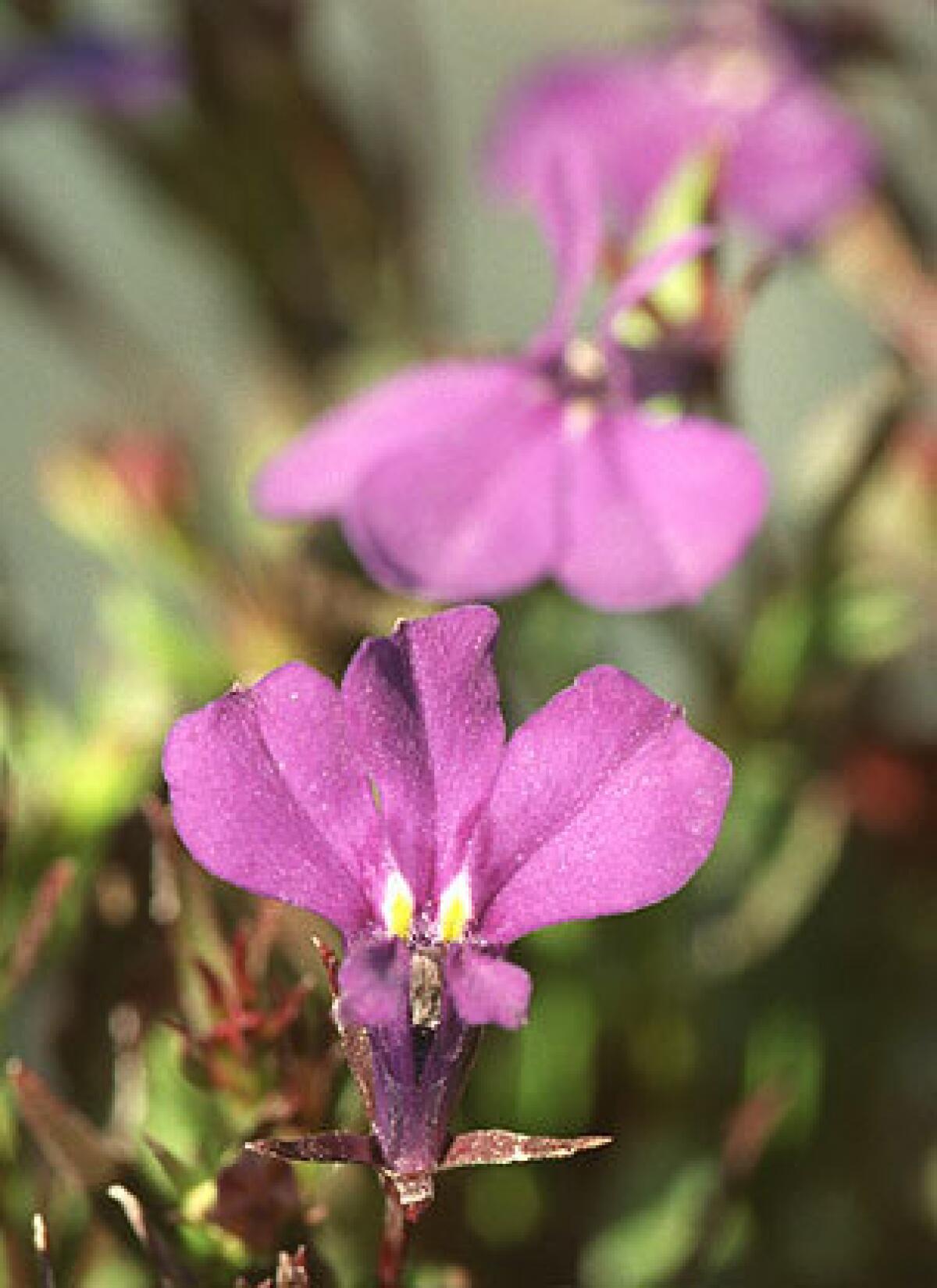Not too late to get in on summer’s show

- Share via
JUNE may be famous for its gloom, but those weeks of overcast can be a good thing. Gray skies let gardeners plant the last of the summer crops and flowers. The cooler weather also gives them more time to make sure sprinklers are working properly and that plants are mulched for the hot, dry summer ahead.
--Monthly Gardener: The June 7 gardening column on June plantings was accompanied by photographs of the California fuchsia (Zauschneria) and ‘Spartacus’ dahlia. Although true fuchsias (Fuchsia) and small bedding dahlias are to be planted in June, the California fuchsia and ‘Spartacus’ dahlia pictured are best planted in fall and early spring, respectively.Fruit drop
Deciduous fruit trees (but not citrus) often thin themselves by shedding excess fruit this month. Take the hint and thin because too much fruit stresses trees and breaks branches. Put props under any heavily laden branch, including citrus. Use sturdy 2-by-2-inch stakes and make a saddle at one end by nailing on short 1-by-2-inch pieces.If citrus or deciduous fruits split, there’s a good chance it was caused by erratic watering or over-watering. Don’t irrigate too often, but let water soak deeply into the ground each time you do. Mound up watering basins or let hoses trickle so water can soak in to a depth of at least 18 inches.
--
Mulch
A proven way to save water right now is to mulch the soil around plants so that moisture does not evaporate so quickly. The trouble is that good mulches are hard to come by. Most commercially available kinds, such as chunks of bark or simple soil amendments, are either too fine or too coarse. They allow spaces where creatures such as earwigs, sow bugs and even slugs can hide and breed, or they may not shade the soil enough, or they might simply wash away.Partially composted garden waste makes the best mulch and residents of Los Angeles are lucky because the city gives the stuff away. There are six locations from San Pedro to the West Valley. For maps go to https://www.lacity.org/san/solid_resources/pdfs/mulching_poster.pdf .
Or, start a compost pile and make it yourself.
--
Beach privileges
Coastal gardeners can grow fuchsias and tuberous begonias for super-showy summer color.Both should be grown in somewhat shady parts of the garden, but they bloom best with strong or speckled light. They thrive in a rich, porous soil or in pots and need lots of water, doing best with frequent fertilizing (every two weeks with fish emulsion or another gentle fertilizer).
There are hanging basket types of both fuchsias and tuberous begonias, and more upright kinds that make little shrub. Fuchsias become somewhat dormant in winter and should be lightly cut back in late winter. Tuberous begonias go completely dormant.
--
Too late to plant?
Not if you’re trying to get in a little more summer color. Many plants love the sun and heat, including dahlias. These can be found at your local nursery. In the shade try coleus, mimulus and impatiens. Lobelia do fine in partial shade.As space becomes available in the vegetable garden, continue planting. If you want pumpkins for Halloween, plant before June 15.
Tomatoes planted earlier in the season are getting huge, so watch for those big tomato hornworms. Green in color, they are hard to spot, but if entire branches and leaves begin to disappear, or you see their black, pellet-like droppings, search harder. Pick them off, with gloves if you are squeamish, and put them in the trash or otherwise dispose of them. Also watch for the green, triangular Keel-backed treehoppers, and their black, spiny young. They suck plant juices and can be dispatched with a squirt of soap spray, though new ones may appear within days. Stay vigilant.
--
Exceptions to the rule
Since there’s no need to worry about irrigating aquatic plants, and because they mostly grow in summer, now is a great time to start a pond garden. It may also be the only time of the year when you can readily find aquatic plants such as water lilies at nurseries.Though you’ll need to water often, which may seem like an excessive use of water this droughty year, you can plant heat-loving subtropicals, such as bananas, bougainvillea, gingers and hibiscus. These do most of their yearly growing in early summer so they quickly become established.
The better time to plant most things is in autumn, starting near the end of October, especially if you are determined to have a more sustainable garden filled with plants that don’t need much water.






